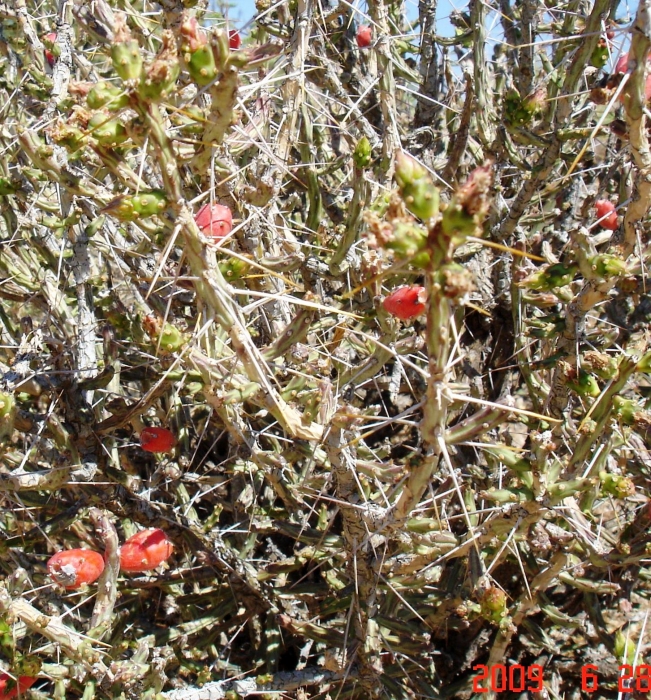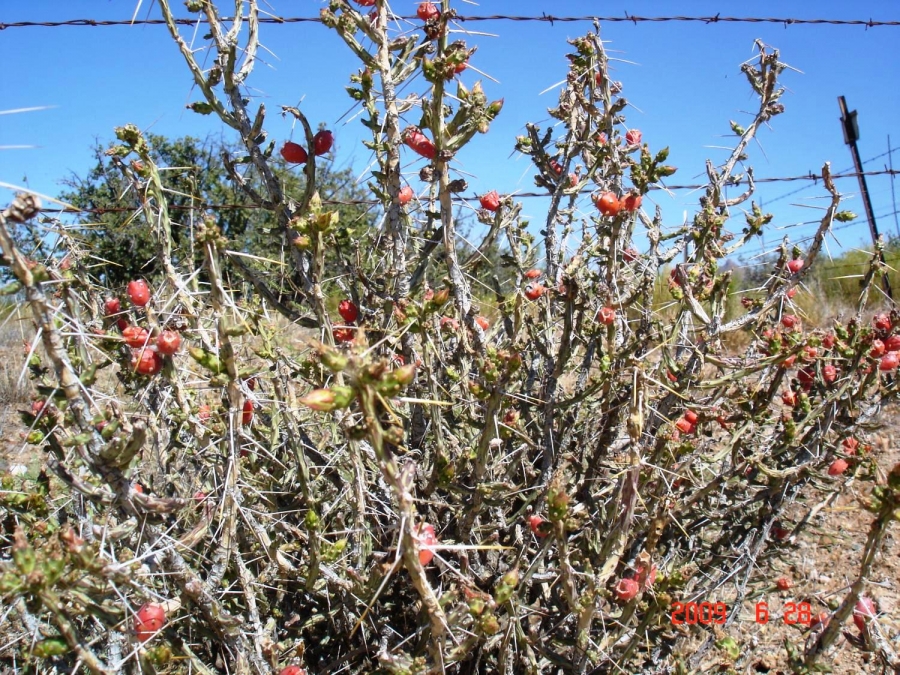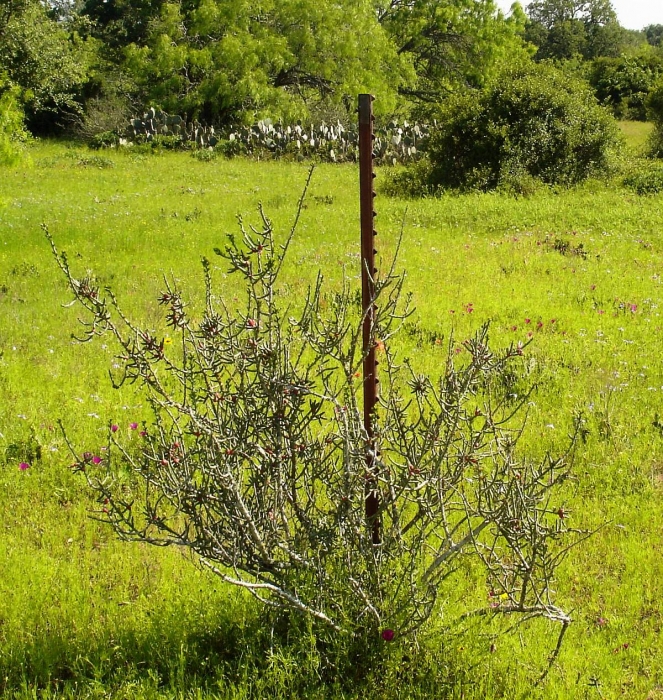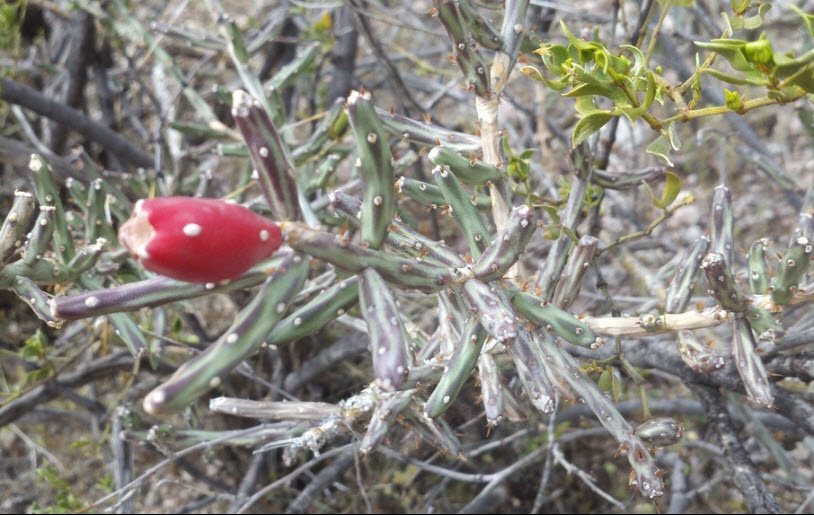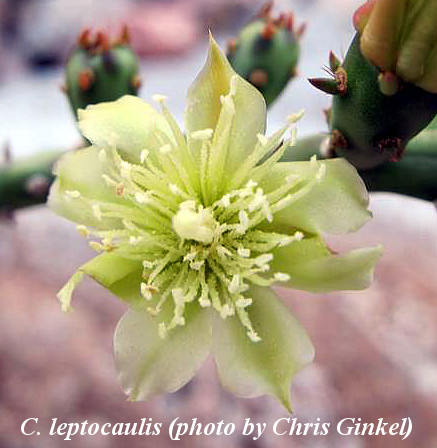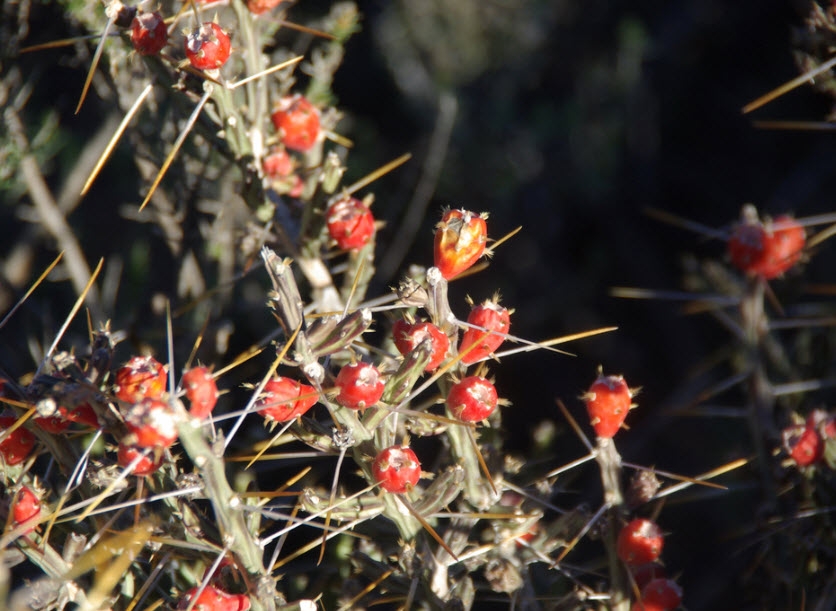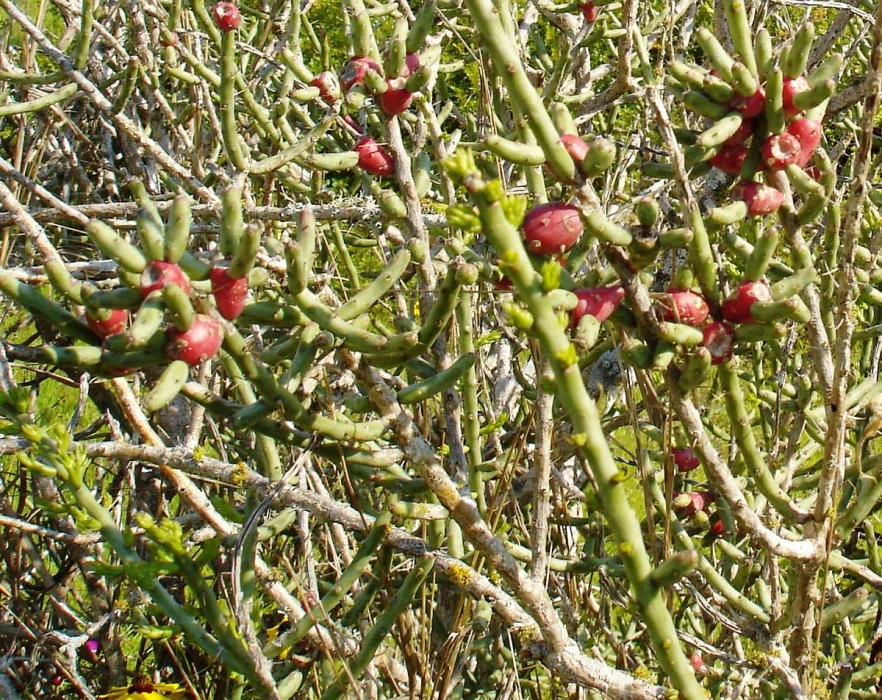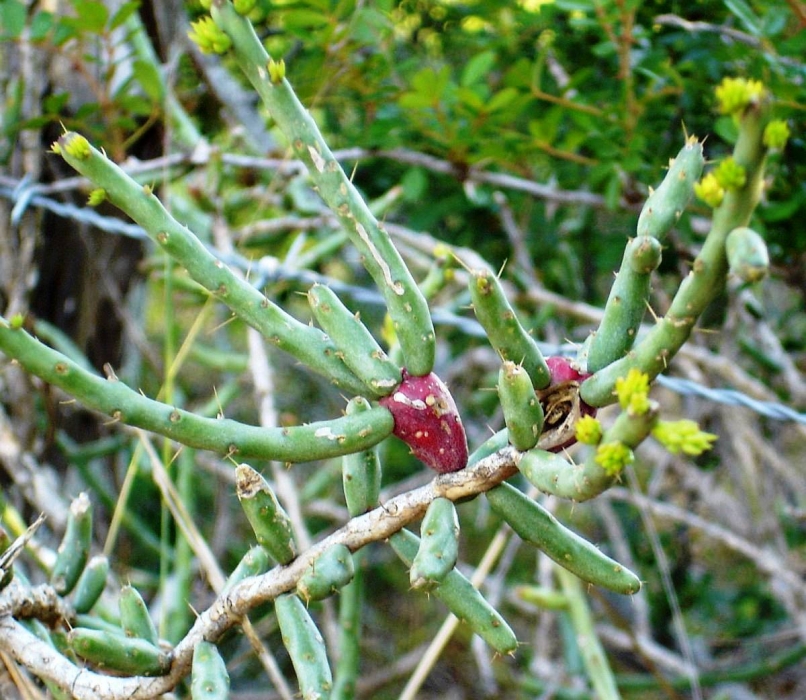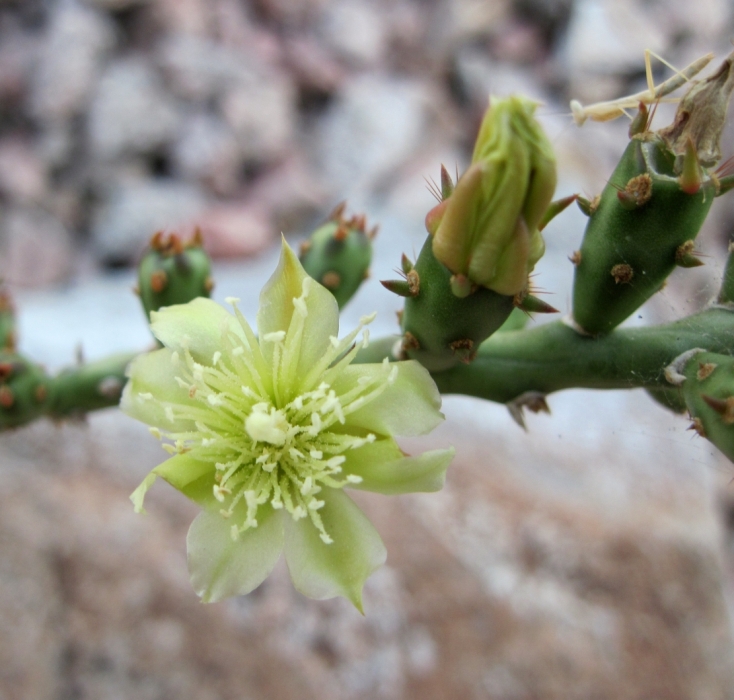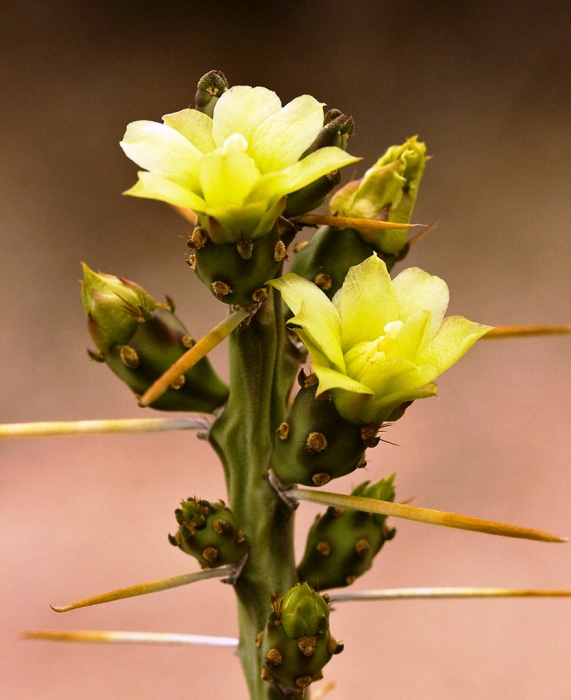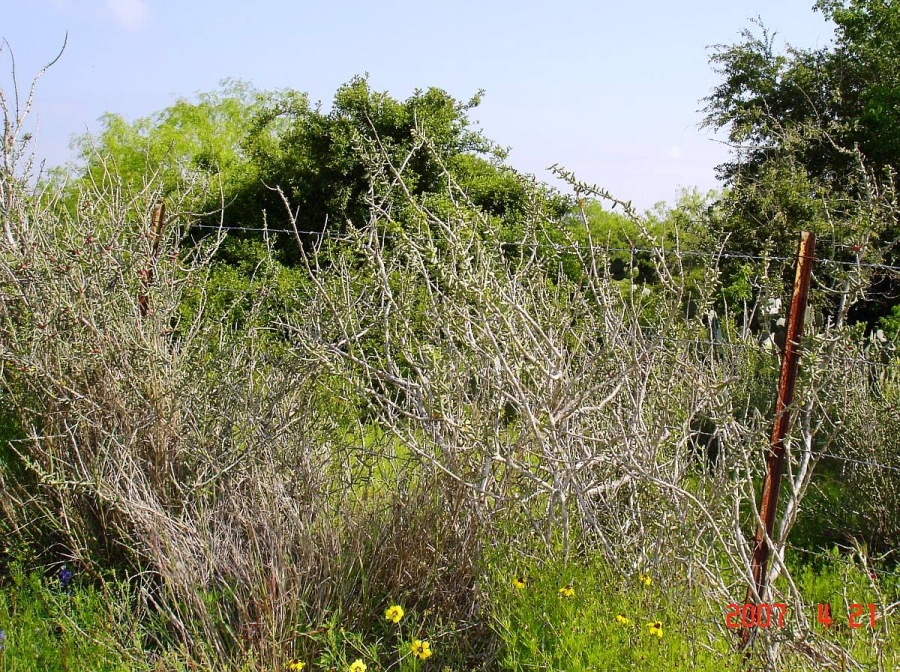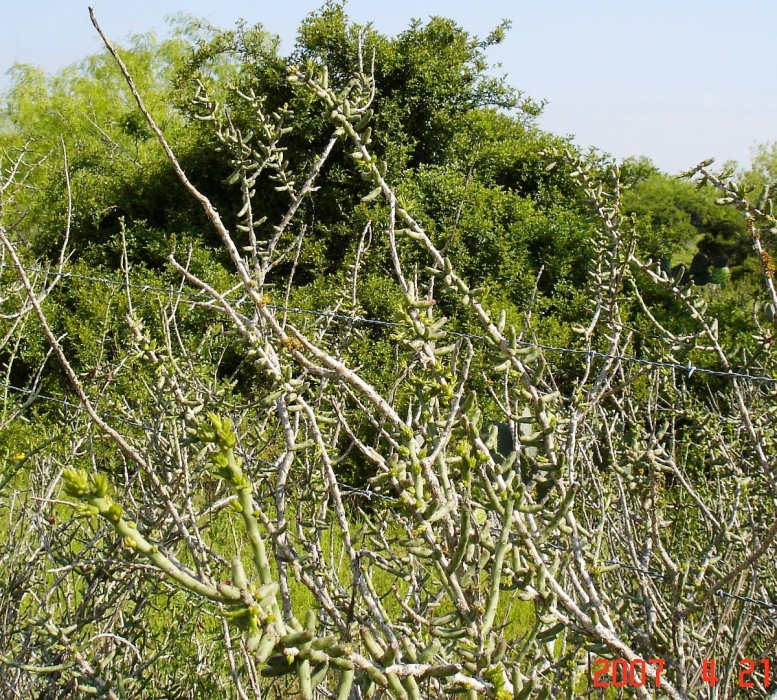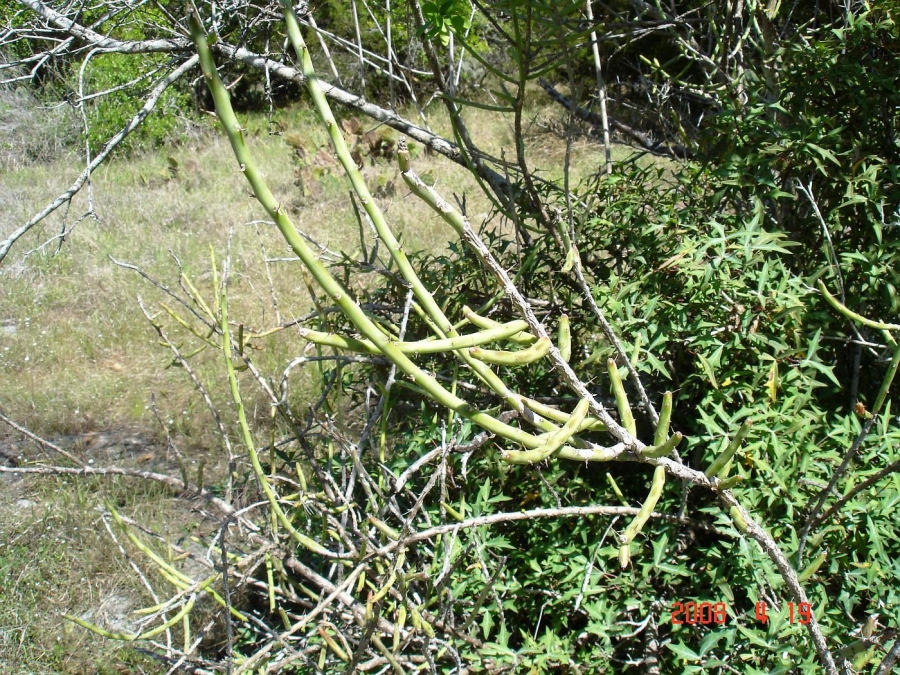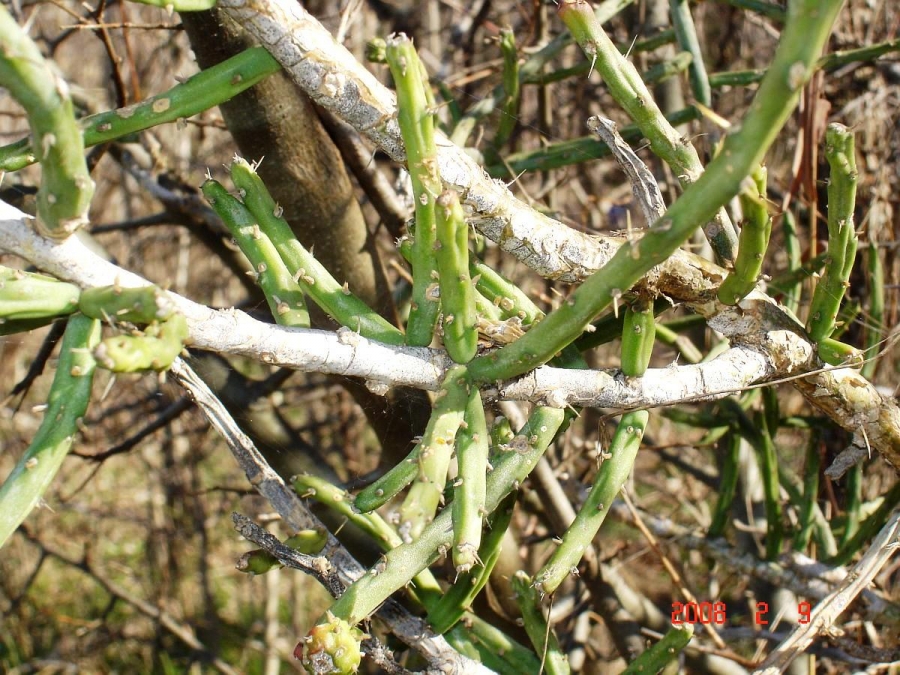De Candolle. 1828. Memoires du Museum d’Histoire Naturelle 17: 118.
Isotype; Herbarium specimen; Herbarium specimen; Herbarium specimen; Herbarium specimen; Herbarium specimen; Herbarium specimen; Herbarium specimen (C. leptocaulis × C. spinosior); Herbarium specimen (C. leptocaulis × C. versicolor); Herbarium specimen (C. leptocaulis × C. whipplei); Drawing (Britton and Rose, v1, 1919)
Original description
Flora of North America treatment
What is Cylindropuntia leptocaulis?
Cylindropuntia leptocaulis is a widespread cholla occurring in a multitude of habitats from 40 to 1500 m elevation from west-central Arizona east through New Mexico and into eastern Texas and far southern Oklahoma, and then south into central Mexico approximately as far as San Luis Potosí.
Details
C. leptocaulis forms shrubs or even small trees up to 1.8 m tall. The stems of C. leptocaulis, which are firmly attached, are the thinnest of the Cylindropuntia species (2 to 8 cm long by 0.3 to 0.5 cm wide), hence the specific epithet “leptocaulis” (“lepto” = slender, “caulis” = stem) and the common name “pencil cholla”. The areoles have only 0 or 1 spine, which is often red-brown with a greyish coat and a yellow tip. Spine sheaths are white, tan, gold, or white, sometimes with red-brown tips. Plants with various spine coloration and spine length can occur in the same population. Flowers are pale yellow to greenish-yellow with greenish-yellow filaments, yellow styles, and greenish-yellow stigmas. Fruits are often red but sometimes yellow. Fruits are fleshy, spineless, smooth and sometimes stalked (stipitate). C. leptocaulis is most often diploid (2n = 22), however, triploids (2n = 33) and tetraploids (2n = 44) have also been found.
C. leptocaulis is known to hybridize with essentially all other Cylindropuntia species with which its range overlaps. C. leptocaulis × C. acanthocarpa var. major is called C. ×tetracantha. C. ×tetracantha is distinguished by having 1-4 spines per areole, tepals which are greenish-bronze to red-magenta, and reddish, slightly tuberculate, slightly spiny fruits. Several other hybrids involving C. leptocaulis have been erroneously referred to as C. ×tetracantha. These include C. leptocaulis × C. spinosior, which have spineless, reddish, strongly tuberculate fruits; and C. leptocaulis × C. versicolor, which have spineless, reddish, smooth, enlarged fruits. C. leptocaulis is also known to hybridize with C. fulgida, C. arbuscula, C. kleiniae, and C. whipplei.

